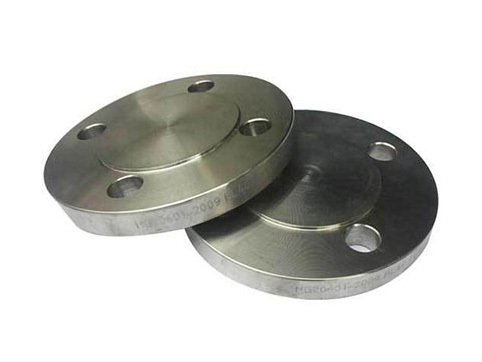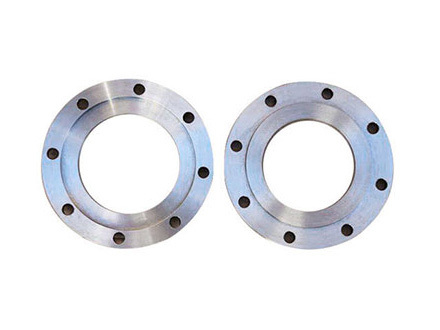How to Choose the Right Stainless Steel Spectacle Blind Flange for Your Project
2025-05-24

How to Choose the Right Stainless Steel Spectacle Blind Flange for Your Project
Table of Contents
- Understanding Spectacle Blind Flanges
- Importance of Using Stainless Steel
- Key Specifications to Consider
- Different Types of Spectacle Blind Flanges
- Identifying Quality Manufacturers
- Installation Considerations for Spectacle Blind Flanges
- Common Mistakes to Avoid When Choosing Flanges
- Frequently Asked Questions (FAQs)
- Conclusion
Understanding Spectacle Blind Flanges
A spectrum blind flange is a type of pipe flange that serves a crucial function in pipe systems. It effectively blocks off a section of piping, providing an avenue for maintenance while ensuring the system remains sealed. The unique design of a spectacle blind flange includes two distinct parts: a solid blind piece and a spacer, which allows the user to alternate between blocking and opening the flow. Understanding this functionality is essential for choosing the right flange for your specific project needs.
Why Are Spectacle Blind Flanges Used?
These flanges are typically used in applications where it is necessary to isolate sections of a piping system for maintenance, inspection, or cleaning. Their ability to provide a reliable seal while allowing for easy removal makes them an advantageous choice in various industries, including oil and gas, water treatment, and manufacturing.
Importance of Using Stainless Steel
When selecting a spectacle blind flange, one of the most critical decisions is the material. Stainless steel is often the preferred choice due to its corrosion resistance, durability, and strength. These properties are particularly important in environments exposed to moisture, chemicals, or extreme temperatures.
Corrosion Resistance
Stainless steel contains chromium, which forms a protective layer of chromium oxide on the surface. This barrier effectively prevents rust and corrosion, making it ideal for applications involving water or harsh chemicals.
Durability and Strength
In addition to corrosion resistance, stainless steel is known for its high tensile strength. This characteristic is crucial in maintaining structural integrity under pressure, especially in high-stress environments.
Key Specifications to Consider
Choosing the right stainless steel spectacle blind flange requires careful consideration of several key specifications, including:
Flange Size
The size of the flange must match the piping system specifications. Common sizes range from 1 inch to 24 inches in diameter, but custom sizes are also available. Accurate sizing ensures proper installation and function.
Pressure Rating
Flanges come with specific pressure ratings indicating the maximum pressure they can withstand. Understanding the system's operating pressure is vital when selecting a flange to prevent failures.
Material Grade
Stainless steel flanges are available in various grades, including 304, 316, and 321. Each grade offers different properties suited for specific applications. For example, 316 stainless steel is recommended for environments that are particularly corrosive.
Standards and Specifications
Ensure that the flanges meet industry standards, such as ANSI, ASME, or API. Adhering to these standards guarantees compatibility and safety within the system.
Different Types of Spectacle Blind Flanges
Not all spectacle blind flanges are created equal. Understanding the differences can help you select the most appropriate type for your project:
Standard Spectacle Blind Flanges
These are the most commonly used flanges, designed with a simple solid blind and a spacer for versatility in operation.
Custom Spectacle Blind Flanges
For applications with unique requirements, custom spectacle blind flanges can be manufactured to meet specific dimensions, materials, or design features.
Retained Spectacle Blind Flanges
These flanges include a retention feature to prevent accidental dislodging during maintenance, ensuring additional safety in high-pressure systems.
Identifying Quality Manufacturers
Choosing a reputable manufacturer is vital to ensuring the quality and reliability of your spectacle blind flanges. Here are some tips to identify quality manufacturers:
Research and Reviews
Look for manufacturers with positive reviews and testimonials from previous clients. Researching their reputation in the industry can provide insight into their reliability.
Certifications and Compliance
Check if the manufacturer complies with international quality standards. Certifications such as ISO 9001 can indicate a commitment to quality assurance and consistency.
Experience and Expertise
Manufacturers with extensive experience in the industry are likely to have a better understanding of the materials and processes required to produce high-quality flanges.
Installation Considerations for Spectacle Blind Flanges
Proper installation of a spectacle blind flange is critical to ensuring optimal performance. Here are some essential considerations:
Tools and Equipment
Ensure you have the right tools for installation, including wrenches, torque wrenches, and alignment tools to achieve a secure fit.
Gasket Selection
The gasket used between the flange surfaces plays a significant role in achieving a leak-proof seal. Choose a gasket material that matches the application conditions to ensure longevity.
Installation Procedure
Follow a standard installation procedure, which includes cleaning the flange surfaces, aligning them properly, and tightening the bolts in a star pattern to ensure even pressure distribution.
Common Mistakes to Avoid When Choosing Flanges
To avoid costly errors in your project, consider the following common mistakes:
Neglecting Material Compatibility
Choosing the wrong material can lead to premature failure. Always consider the operating environment and choose materials that will withstand the conditions.
Ignoring Pressure Ratings
Overlooking pressure ratings can result in flange failures. Always match the flange rating to the system's operational requirements.
Improper Sizing
Incorrect sizing can lead to installation challenges. Measure your piping system accurately to ensure compatibility with the selected flange size.
Frequently Asked Questions (FAQs)
What is a spectacle blind flange?
A spectacle blind flange is a type of flange used to isolate sections of a piping system. It features a solid blind section and a spacer for versatility.
Why choose stainless steel for flanges?
Stainless steel offers superior corrosion resistance, durability, and strength, making it ideal for various industrial applications.
What sizes do spectacle blind flanges come in?
They typically range from 1 inch to 24 inches, but custom sizes can be manufactured to meet specific project requirements.
How can I ensure proper installation of a spectacle blind flange?
Use the right tools, select compatible gaskets, and follow standard installation procedures to achieve an effective seal and secure fit.
What are the different types of spectacle blind flanges?
The main types include standard, custom, and retained spectacle blind flanges, each designed for specific applications and features.
Conclusion
Selecting the right stainless steel spectacle blind flange for your project involves a thorough understanding of specifications, material properties, and installation requirements. By carefully considering each aspect discussed in this guide, you can make informed decisions that enhance the reliability and efficiency of your piping systems. Remember, quality matters, so choosing reputable manufacturers will significantly impact the success of your project. Don't compromise on quality—invest in the right flanges for long-term benefits.
Blog








